Idly flicking through one of the many Russian chess books I recently purchased from my friend Steve Giddins, my eye was caught by a diagram from a game by Peter Romanovsky. Peter Romanovsky was a strong Russian master and author especially active in the 1910s and 1920s. I had read his book “Soviet Middlegame Technique” (translated into English by Quality Chess) and liked it greatly: inevitably dated in some ways, but still full of valuable insights.
The diagram looked like the start of a thematic demonstration of dynamic attacking play: just the type of game I like! However, after a couple of hours’ analysis I realised that – despite some moments of exquisite play by Romanovsky – the situation had been much less clear-cut than I had assumed. And once I let my engines loose to check both the game and my analysis, well… let’s just say the game looked completely different!
Romanovsky,Peter Arsenievich – Chekhover,Vitaly [D03]
1928(?)
1.d4 Nf6 2.Nf3 e6 3.Bg5
The Torre Attack was not a frequent choice in Romanovsky’s repertoire – in any case from his database games.
3…d5 4.e3 Nbd7 5.Bd3 Be7 6.0–0 0–0 7.Nbd2 c5 8.c3 Qc7 9.Qe2 e5
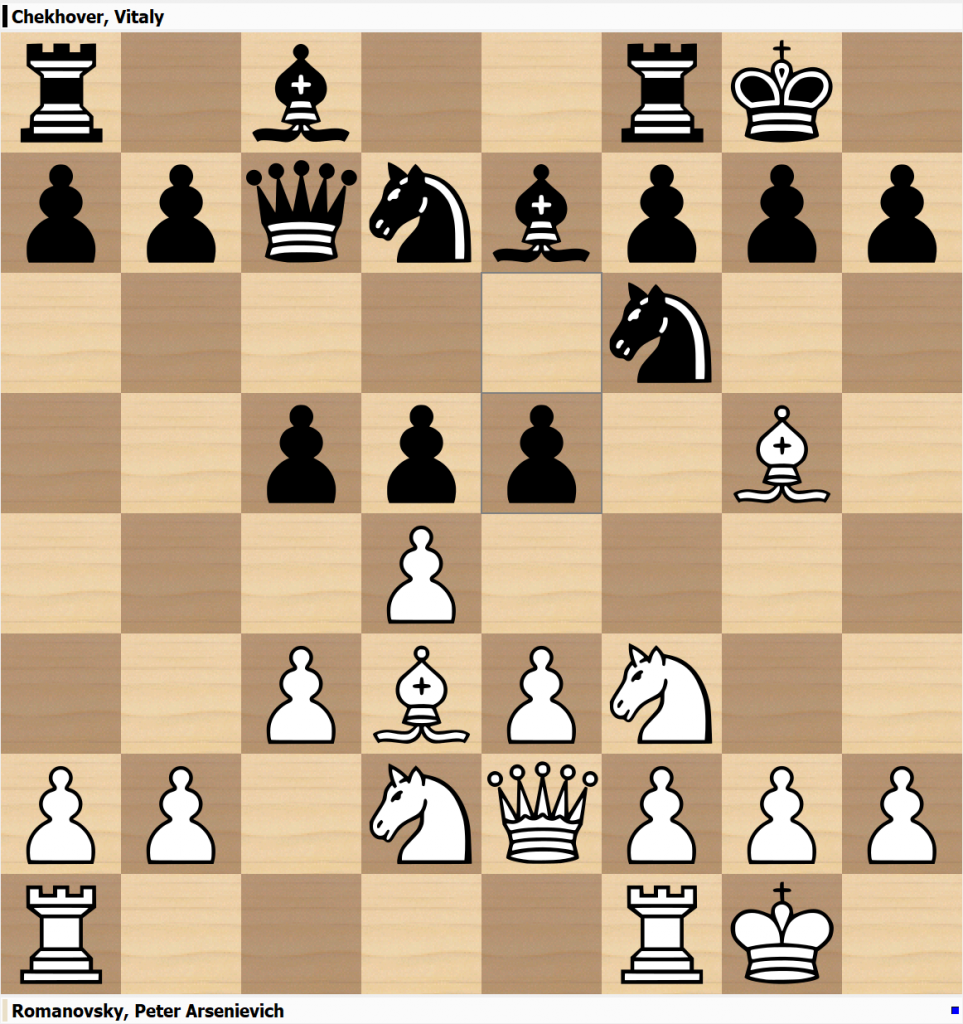
An extremely direct attempt from Black to equalise immediately. Romanovsky reacts in kind and the game becomes very sharp!
10.e4
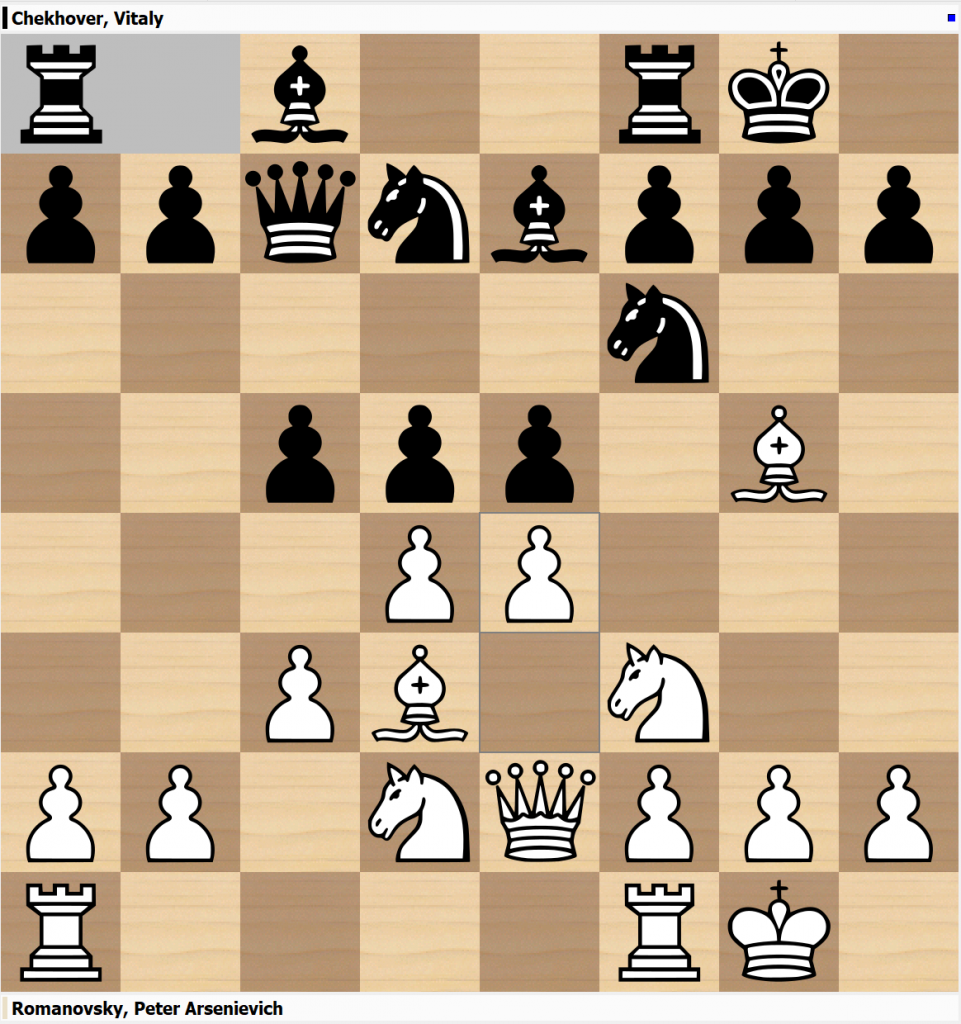
White seems better-placed for such a tactical central explosion. All his minor pieces are developed to active squares and his rooks are ready to move to the central files. By contrast, Black’s knight on d7 blocks the queenside pieces (the bishop on c8 and thus also the rook on a8) and makes the bishop on e7 loose by blocking the protection of the queen on c7.
10…dxe4
10…exd4 was an engine suggestion, cleverly exploiting the temporary threat of …c4 followed by …d3 hitting the White queen and bishop in quick succession. By eschewing …dxe4, Black avoids drawing the White knight on d2 to e4 and limits the activity gained by White’s pieces after 10.e4. 11.e5 (11.cxd4 h6 12.Bh4 Re8 was the engine idea, maintaining the central tension. This still looks promising for White, but requires more effort to generate activity than the game.) 11…c4 12.exf6 Nxf6

Making sure that White cannot escape with the bishop to f5 13.Rfe1 13.Rae1 is possible to activate the a1–rook before dropping the bishop back to b1. However, my engine was simply thinking about capturing on d3 with the bishop once Black plays …d3 and playing an isolated queen’s pawn position. 13…Bd8 14.Bb1 d3 and now 15.Bxd3 cxd3 16.Qxd3 is an edge for White in a typical isolated queen’s pawn position.
My engines also suggested trying to improve the moment of capturing on d3 with a move like 15.Qe3 followed by Bf4 but White remains with an advantage in any case.
11.Nxe4 exd4 12.cxd4
12.Rfe1
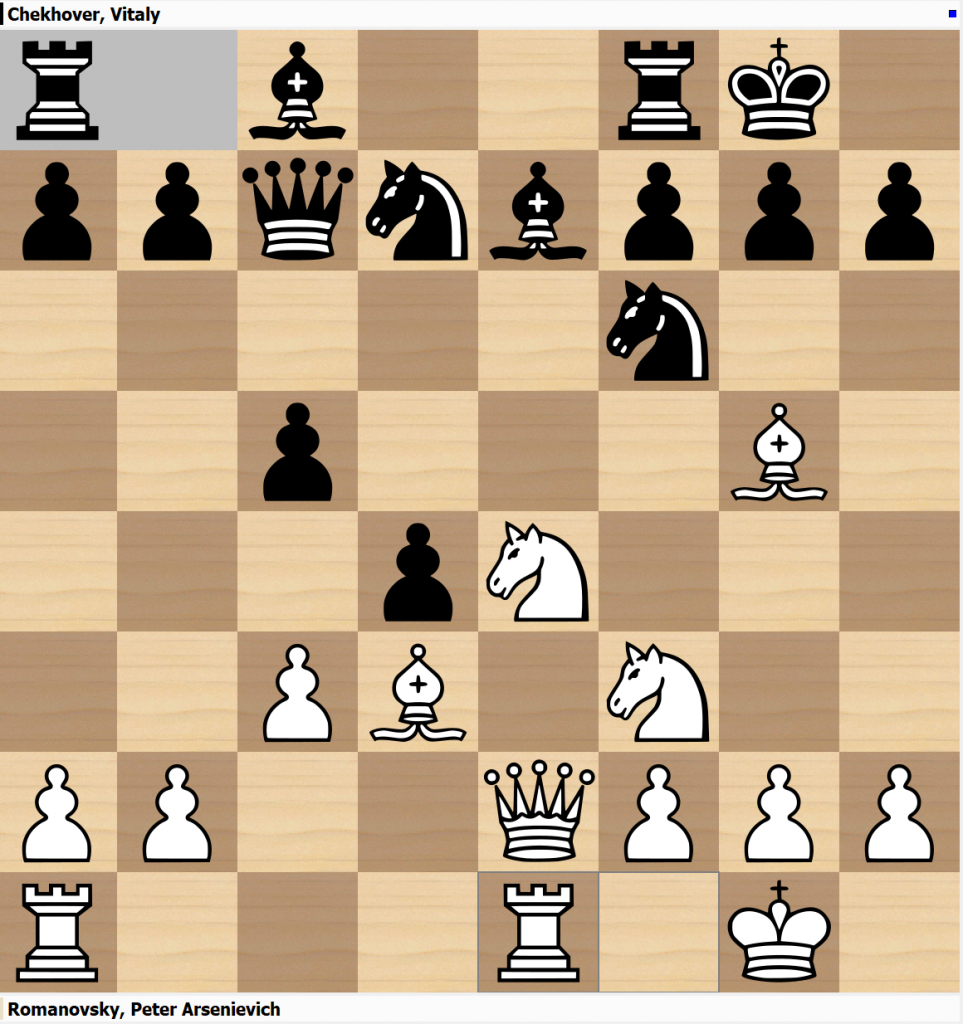
After analysing the game continuation, I became dissatisfied with White’s chances and decided that 12.Rfe1 gave better prospects for a White advantage. As we shall see, that is not entirely correct, but it is a dangerous line for Black.
a) 12…b6 13.Nxf6+ Bxf6 14.Qe4 g6 15.Qxa8 Bb7 16.Qxa7 Ra8 17.Qxa8+ Bxa8 18.Re8+ is the simple refutation of Black’s development scheme in the game.;
b) 12…Bd8 was another defensive idea of mine, but this leads to an obviously worse version of the game after the simple 13.cxd4 cxd4 14.Nxd4 with very active pieces for White.;
c) 12…Rd8 a defensive idea I liked aiming for …Nf8, bravely accepting doubled pawns on the kingside. 13.cxd4 (13.Rad1 Nf8 14.Nxf6+ Bxf6 15.Bxf6 gxf6 Didn’t look too bad to me. Black has got a lot of freedom by exchanging some minor pieces and the doubled pawns are not too easy to attack directly.) 13…cxd4 14.Rac1 Qa5 15.Bc4 again ended up looking rather nasty for Black. The rook on d8 will soon wish it was back on f8 to cover f7.;
d) 12…h6 13.Nxf6+ (13.Bh4 Nd5 14.Bg3 Qd8 15.Bc2 followed by Rad1 also looks uncomfortable for Black.) 13…Bxf6 (13…Nxf6 14.Qxe7 Qxe7 15.Rxe7 hxg5 16.Nxg5 looked good for White. f7 is a sensitive square and Black cannot easily develop his queenside pieces.) 14.Qe4 was the idea 14…g6 15.Bxh6 c4 A sharp engine riposte that I had missed. 16.Bf4 (16.Bf1 Nc5; 16.Bxf8 Nxf8 17.Bf1 Bf5 followed by …dxc3 gives plenty of counterplay for Black.) 16…Qc6 17.Qxc6 bxc6 18.Bxc4 dxc3 19.b3 ends up as a slight advantage for White as the pawn on c3 is more of a weakness than a strength.
12…b6 13.Nxf6+ Nxf6
13…Bxf6 14.Qe4 g6 15.Bf4 (15.Qxa8 Bb7 16.Bf4 Qc6 17.Qxa7 Ra8 18.Bb5 was my line but it is less convincing. 18…Qe4 (18…Qd5 19.Bc4 Qc6 20.Qxa8+ Bxa8 21.d5 Qc8 22.Rad1 Bxb2 23.Rfe1 is very unpleasant for Black. The d-pawn is going to be very hard to stop.) 19.Rfe1 Rxa7 20.Rxe4 Bxe4 21.Ne5 with a better pawn-up ending for White but lots of work still to do.) 15…Qb7 16.Qe1 is the clever engine idea, winning the exchange with Be4 on the next move!
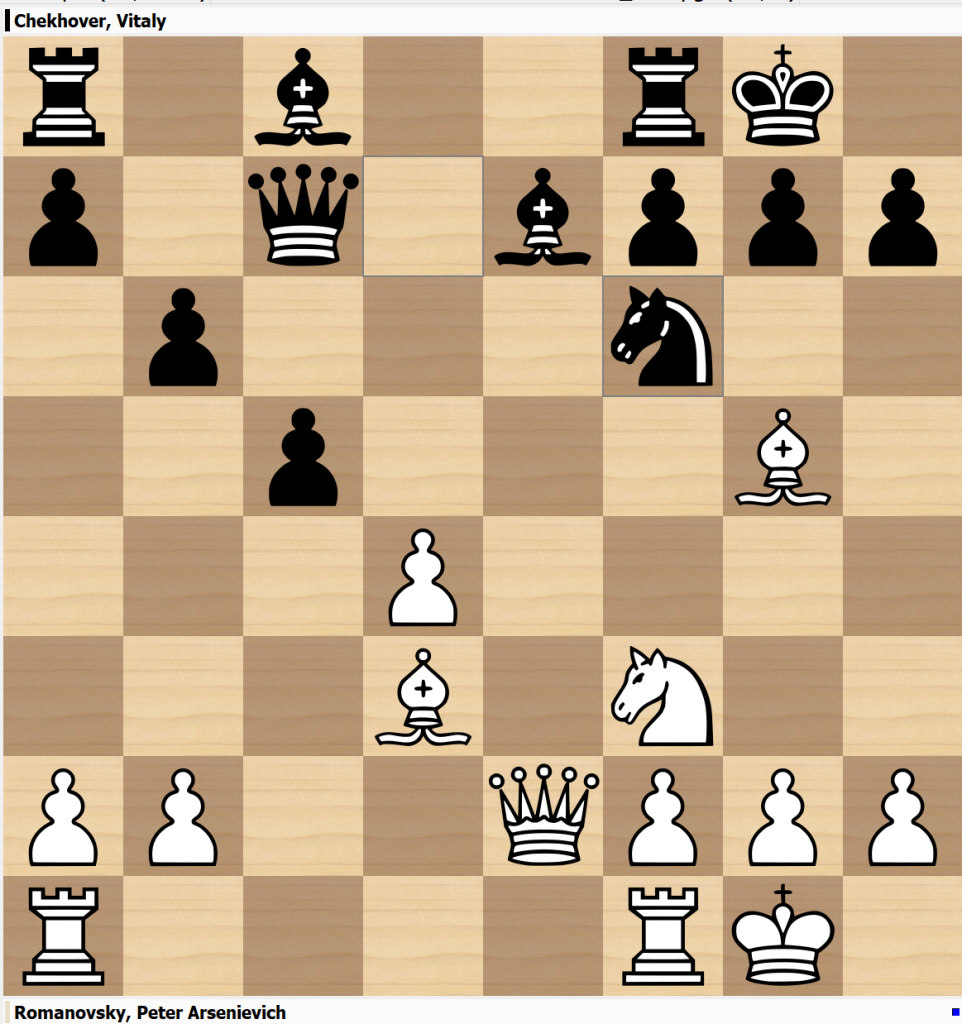
14.Rfe1
14.b4 Wow!!
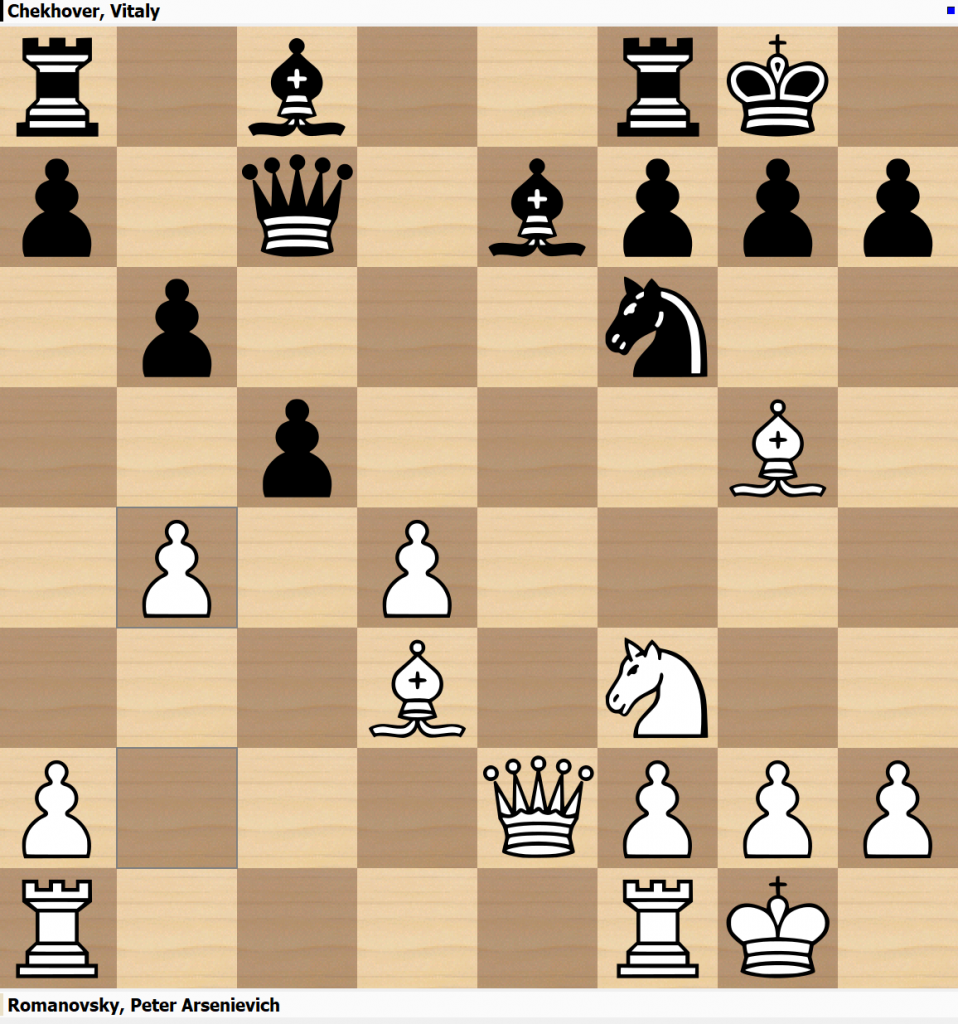
A Stockfish special, and a quite remarkable move! It’s one of those switches of tactical focus that Stockfish specialises in! As a human, you’re looking at the kingside all the time; Stockfish just spies an opportunity to win the c5–pawn!
a) 14…cxb4 15.Rac1 Opening the c-file is just too awkward for Black due to the loose bishop on e7. 15…Qb7 16.Bb5
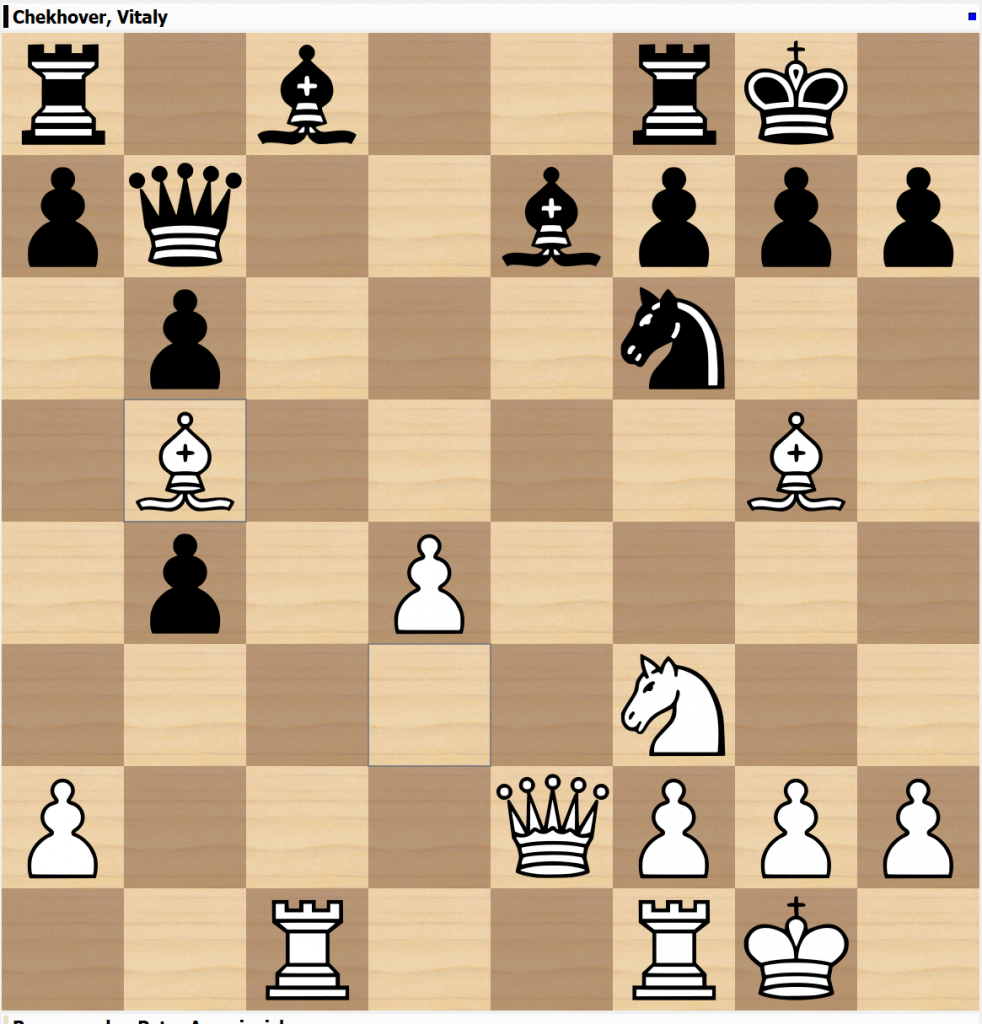
Easy! Winning the exchange! 16…Bd8 (16…Bd7 17.Qxe7) 17.Bc6 Qb8 18.Bxf6 Bxf6 19.Qe4 Ba6 20.Rfe1 wins;
b) 14…cxd4 is similar to 14…cxb4 15.Rfc1 An important tactical nuance – you’ll see why later 15…Qd6 16.Bxf6 Qxf6 (16…Bxf6 17.Qe4 wins) 17.Qe4 g6 18.Qxa8 Bf5 19.Qd5 Bxd3 This was the reason for 15.Rfc1! 15.Rac1 would have left the rook on f1 attacked! 20.Rc6 Qf4 21.Qxd4 and White is the exchange up with a clear advantage.;
c) 14…Bb7 15.Rfe1
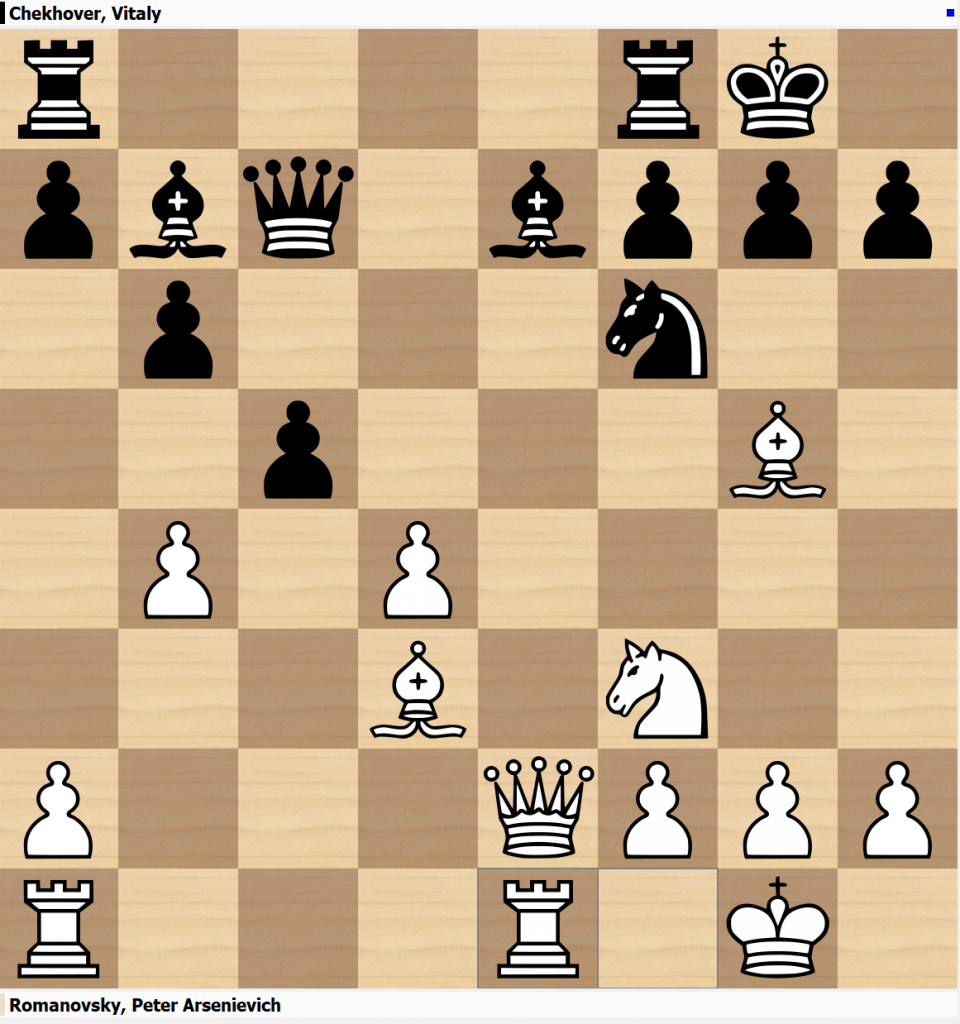
This attack on the e7–bishop is very awkward to deal with without …Be6 to block it. 15…c4 (15…Rfe8 16.Bxf6) 16.Qxe7 Qxe7 17.Rxe7 Bxf3 18.Bxc4 is a clear pawn for White.;
d) 14…Be615.dxc5 bxc5 16.Rac1
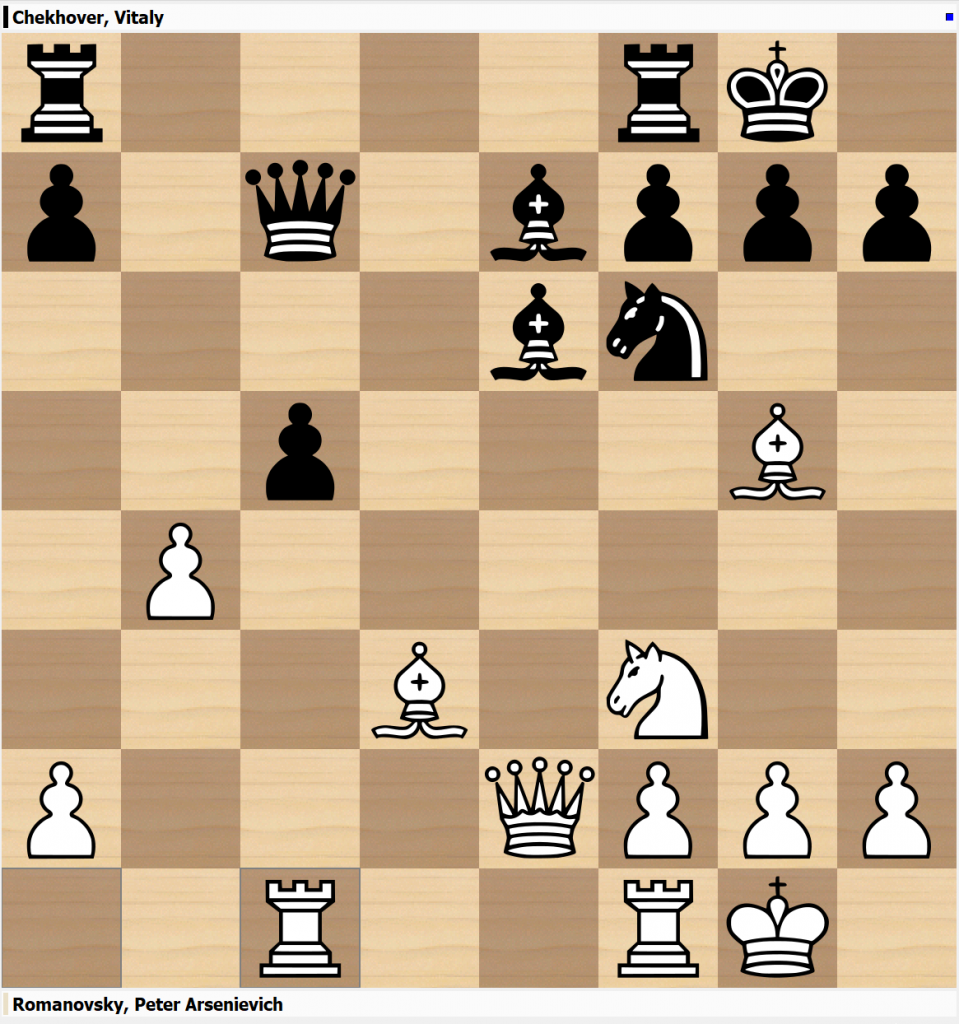
and White is simply picking up the c5–pawn after either Bxf6 or Be3 on the next move! Genius!
14…Be6 15.d5
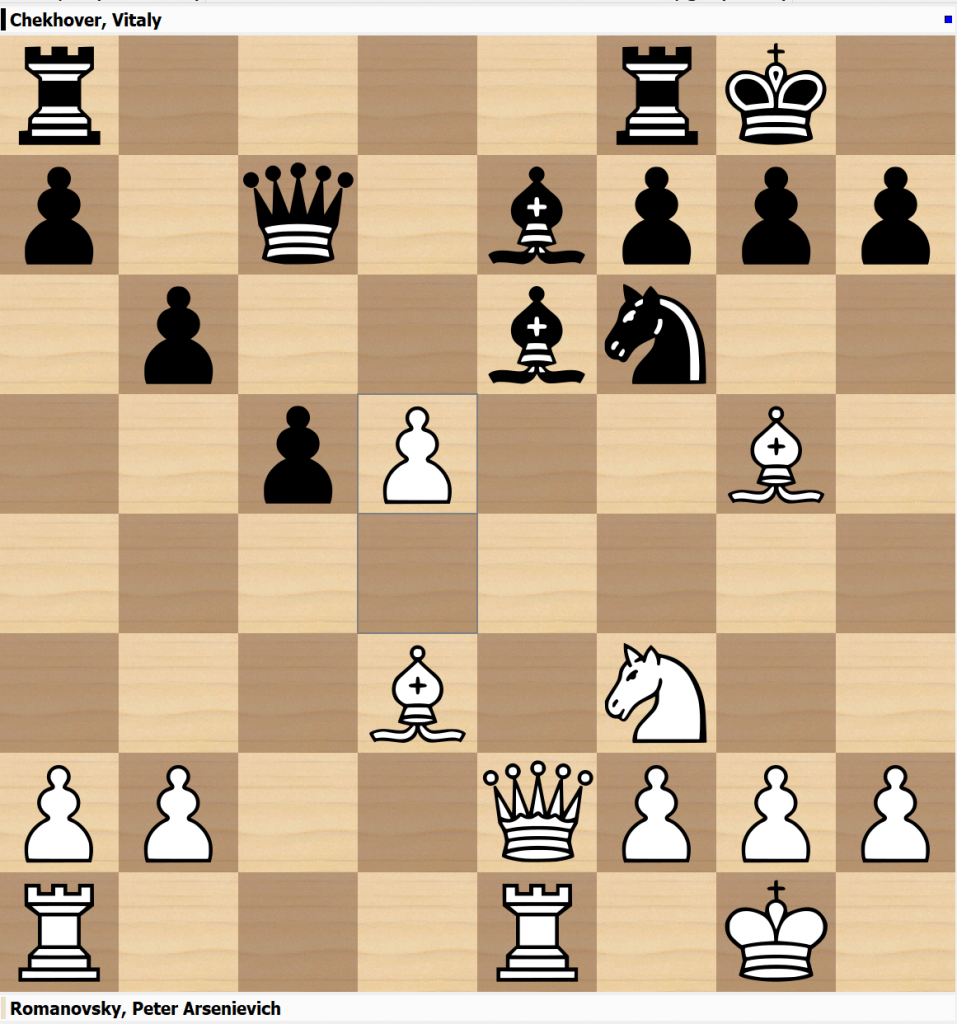
When I saw this move adorned by a diagram in the book, I thought “Ah such a strong and typical break!” Actually, Black has multiple ways to deal with the resulting White initiative!
15…Nxd5 16.Qe4 g6 17.Bxe7
This felt a bit suspicious even while I was just reading quickly through the game. It doesn’t feel like the sort of move that White plays to develop a strong kingside initiative. In fact, after this move the engines think that Black is slightly better!
17.Qh4 Bxg5 18.Nxg5 Nf6 19.Nxe6 fxe6 20.Rxe6 Kg7 is White’s best line according to my engine with just a small advantage. It feels a little uncomfortable for Black to have an open second rank but it doesn’t seem to be enough for White to develop anything lasting.
17…Nxe7
17…Qxe7 18.Qxd5
18.Ng5 Bf5
18…Nf5 19.Nxe6 fxe6 20.Qxe6+ Kg7 didn’t look too scary to me, and the engine assesses it as dead equal. (20…Qf7 21.Bxf5 gxf5 was pointed out in Romanovsky’s book: it’s a slight advantage to White due to the open Black king, although it should again be holdable.)
19.Qh4 h5 20.Nh7
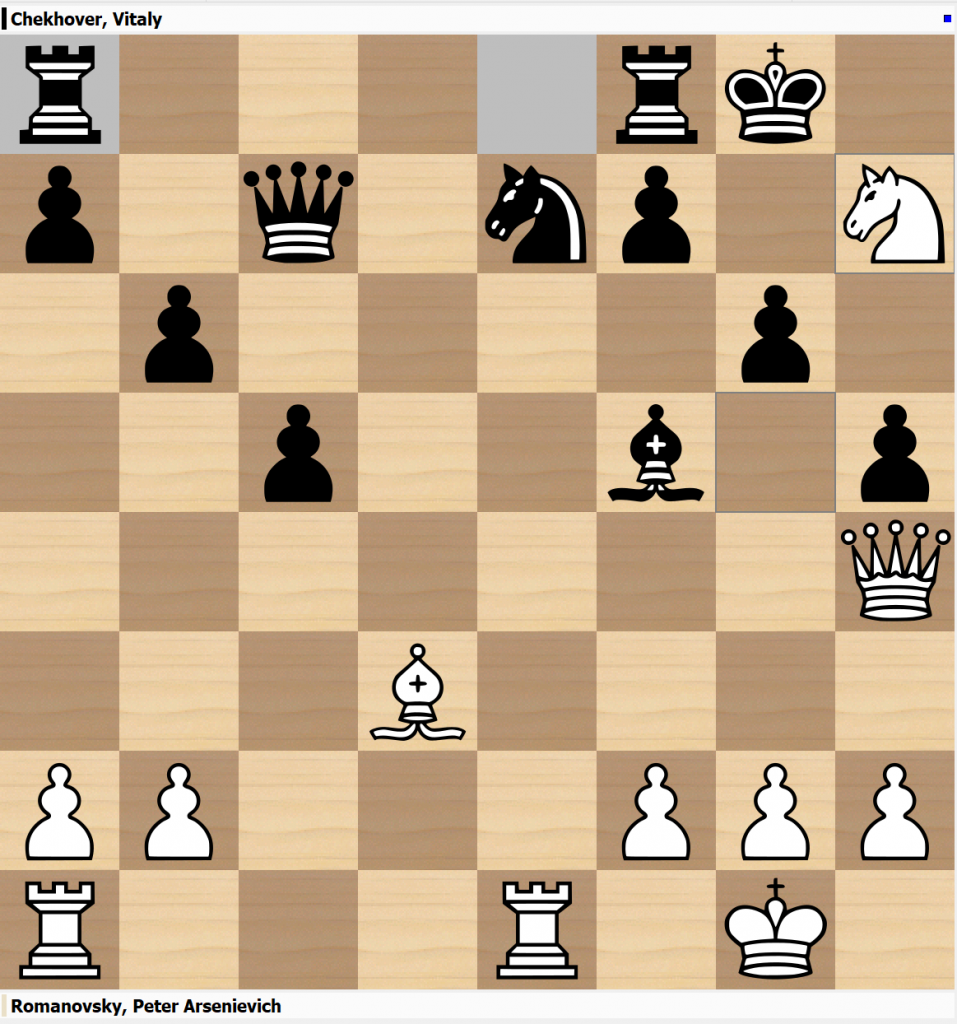
An extremely artistic move… but the engine finds an even more artistic answer!
20.Rxe7 Qxe7 21.Bxf5 tempted me, but the engine thinks that 21…Rfe8 (21…gxf5 22.Qxh5 f6 23.Qg6+ Kh8 24.Qh6+ is a draw by repetition.) 22.Bd3 (22.h3 gxf5 23.Qxh5 f6 wins) 22…Rad8 23.Bb5 Rd4 24.f4 Qe3+ (24…Red8 is also good for Black according to my engine, but it is more complicated.) 25.Qf2 Rxf4 gives Black a pleasant edge with rook and 2 pawns for knight and bishop.
20…Kxh7
20…Nd5
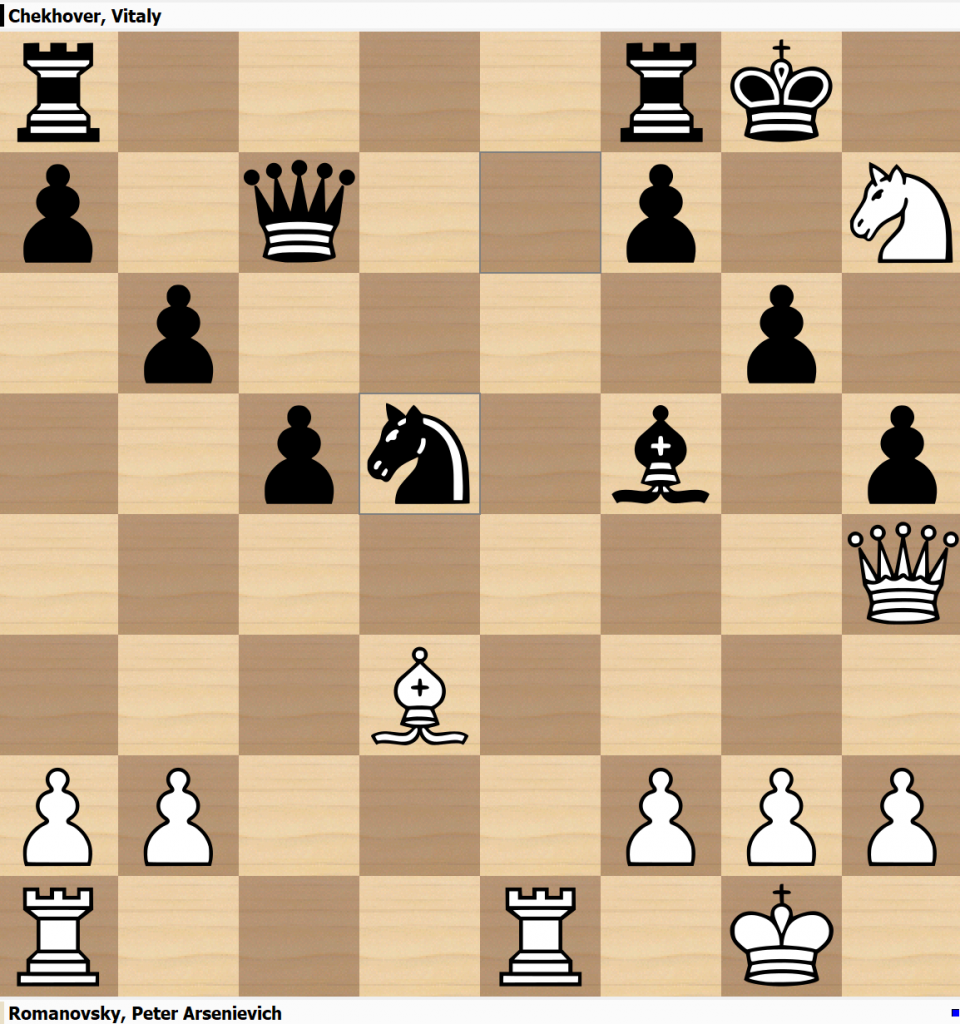
is the engine resource that – much to my regret – I had not seen when analysing! 21.Bxf5 (21.Nxf8 Bxd3 and the knight on f8 cannot escape! 22.Qg5 Qd6 23.Rad1 Bf5 24.Qd2 Rd8 The pin on the d-file is awkward for now but Black will manage to unpin (starting with …Rd7 after capturing the knight) and remain with 2 pieces for the rook.) 21…Kxh7 22.Qxh5+ Kg7 23.Qf3 (23.Qg5 Rh8 is suddenly very unpleasant for White! h2 is attacked and 24.g3 Rh5 wins a piece!) 23…Rad8 24.Bd3 Qf4 is a pleasant position for Black! 25.Qxf4 Nxf4 26.Bc4 Rd2 27.b3 Rfd8
21.Rxe7
Now it’s difficult for Black
21…Qc8
21…Qxe7 22.Qxe7 Bxd3 23.Re1 is an attritional defensive attempt but it won’t be easy for Black: the White queen is active and the Black queenside pawns are easy to attack.
22.Bc4 Kg7 23.Bd5 Rb8 24.Qf4 Qd8 25.Qe5+
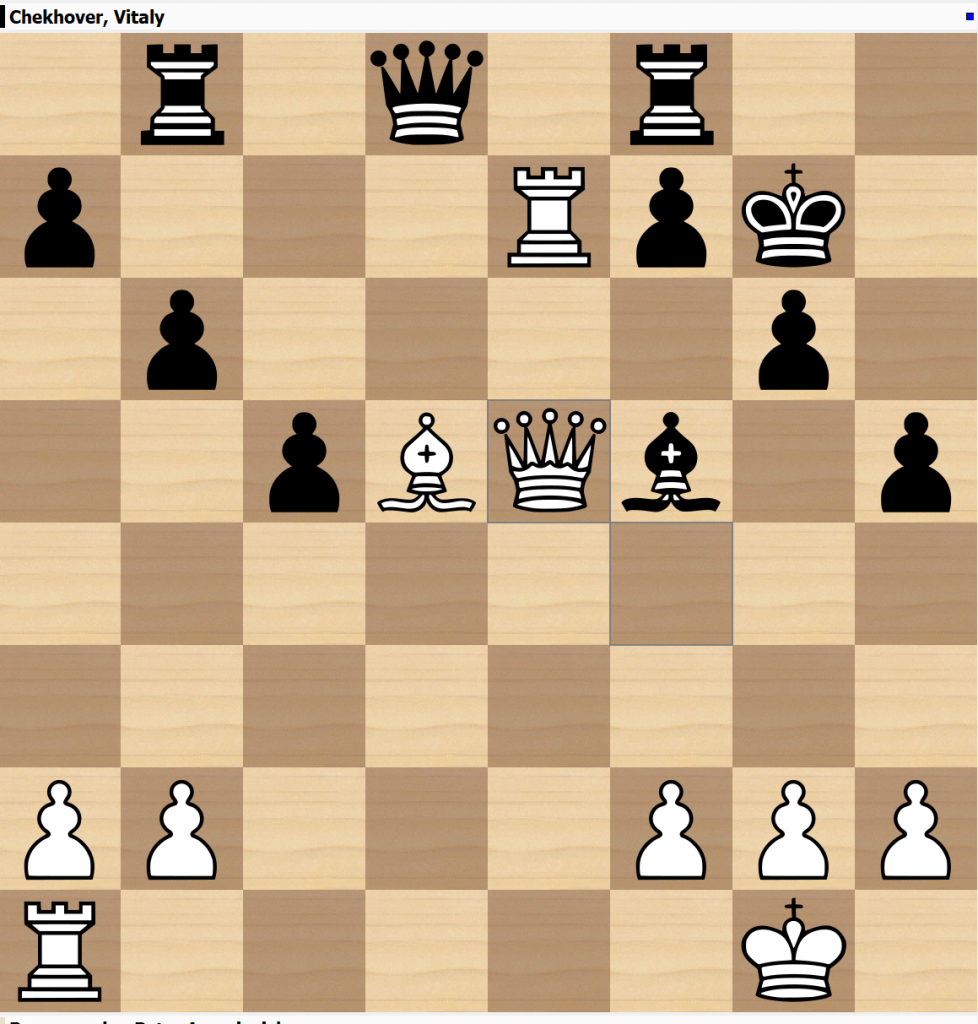
I really like this passage of play from Romanovsky: the White pieces are centralised beautifully and the Black queen is prevented from activating itself on dark squares like d6, f6 and d4.
25…Kh6 26.h4
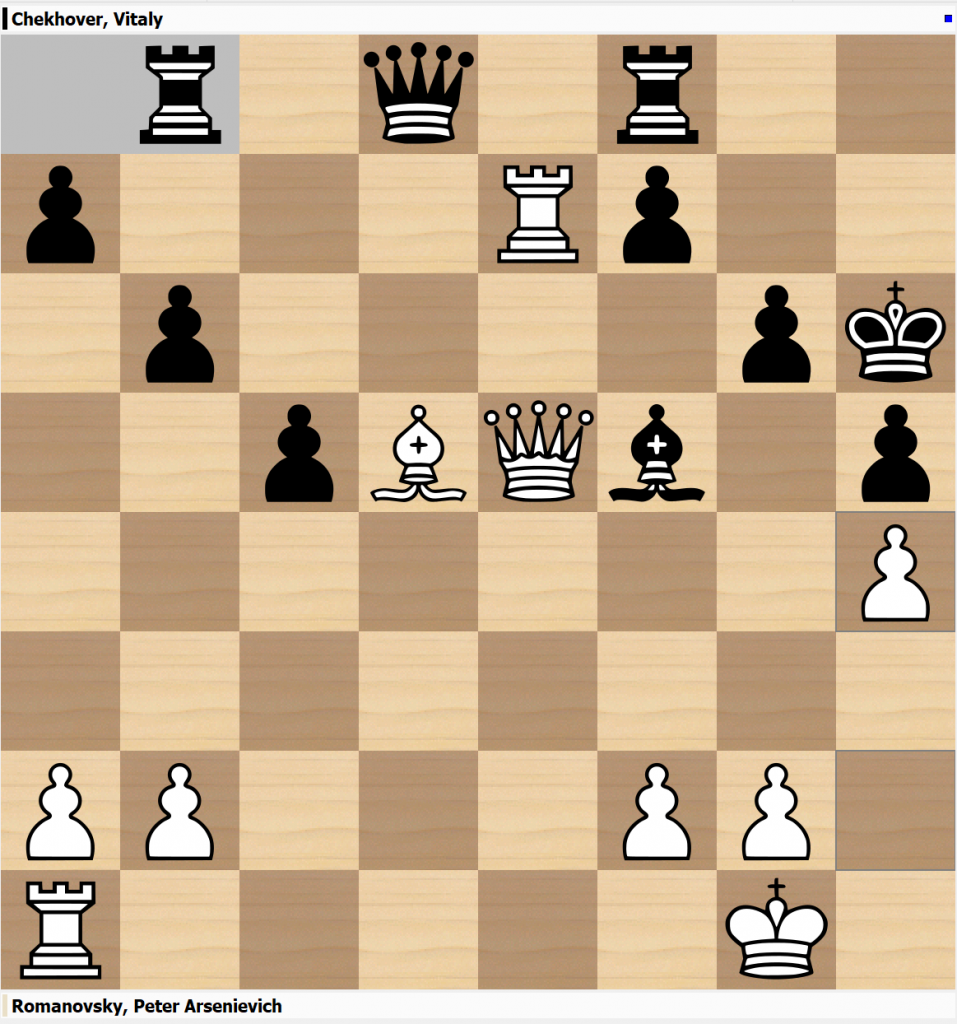
Another lovely move, preventing …Be6 while giving the White king a bolt hole.
26…f6
26…Be6 27.Qg5+ Kg7 28.Bxe6 wins; 26…b5 was what I wanted to play, preparing … Rb6 and …Qd6, fighting for the central dark squares. 27.Re1 Rb6 28.Bxf7 Qd4 29.Qg3 is one engine line, threatening Qg5+. The Black king is just too weak now that the second rank is also unsafe.
27.Qf4+ g5 28.hxg5+ Kg6
28…fxg5 29.Qe5
29.Be4
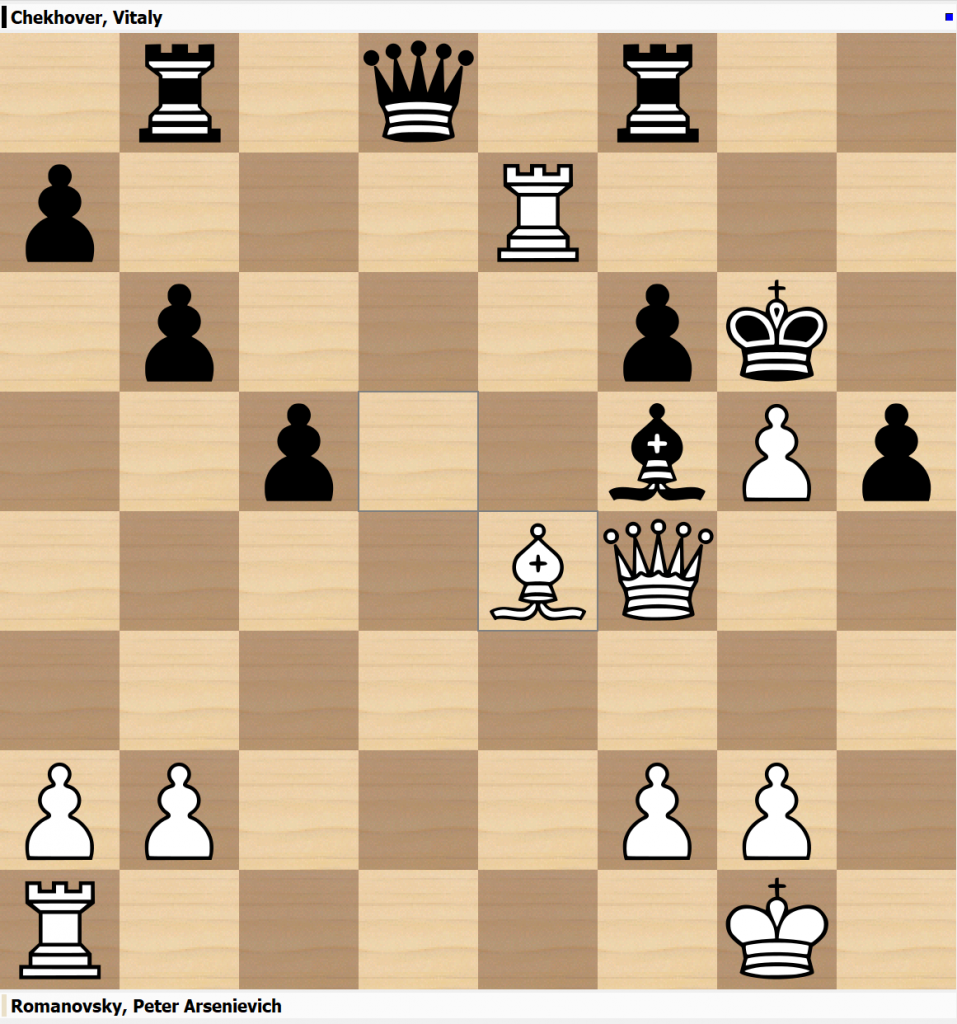
29…fxg5 30.Re6+ 1–0
A neat pin finish to a very interesting game!




As usualy great and intrested lesson. Thanks a lot my GM.
Thanks!! Best Wishes, Matthew
Hi Matthew, thanks for this – I find it fascinating to read what you saw and what the engines added. Is the book his best games collection, and why is the date uncertain? He’s an interesting character – short bio on Douglas Griffin’s blog here https://dgriffinchess.wordpress.com/2018/11/11/levenfish-romanovskys-book-on-the-1927-capablanca-alekhine-match-with-translated-annotations/ There are two completely different versions of Soviet Middlegame Technique, the Quality Chess one being much later. According to the Italian translator of the lesser known earlier version, his later work was less consistent and clearly structured because he was under pressure from the Soviet authorities to praise Chigorin, who doesn’t feature much in version one.
Hi James, thanks for the comment and sorry for taking so long to approve the comment! (busy with work etc…) The book is one of those Russian black books and the reason I’m not sure about the date is because I can’t read Russian. There were a couple of dates (1927 and 1928) in the surrounding text which is why I put 1928(?) but I could be completely wrong! Yes, to be honest I feel that about a lot of these Russian classics: the start is often really good but then it seems to tail off somehow. A recent reissue of a Kotov book had the same problem. But on the other hand, the start made the book worth the read! Best Wishes, Matthew